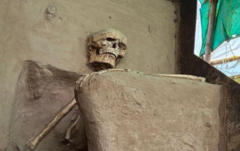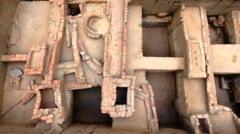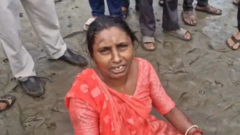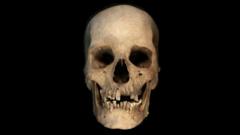The skeleton, dating back roughly 1,000 years, was discovered in Vadnagar, Gujarat, by Archaeologist Abhijit Ambekar during excavations in 2019. Found in a cross-legged, meditative position, it is only one of four similar remains identified across India. However, despite its archaeological significance, the skeleton has yet to find a home in a museum, as disputes linger over which authority should oversee its placement.
For the past six years, the remains have been housed in a makeshift tarpaulin tent, not far from a newly opened Archaeological Experiential Museum. This shelter lacks proper security and is exposed to environmental elements, leading to concerns from locals and archaeologists alike about the skeleton's preservation. Ambekar expresses frustration over the bureaucratic delays, as decisions surrounding the skeleton's future remain mired in administrative red tape.
Local authorities have claimed the skeleton has not yet been placed in the museum due to a failure to follow proper procedures, while the Archaeological Survey of India (ASI) states the skeleton is still in its custody. Efforts are underway to expedite the process, but for now, the skeleton's fate remains uncertain.
The significance of the skeleton extends beyond its age; it is believed to hold insights into ancient burial practices, diet, and lifestyle, contributing to a deeper understanding of life in Vadnagar during the Solanki period. While locals remain proud of their historical heritage, they voice disappointment over the mistreatment of such an important artifact, questioning the purpose of constructing a museum nearby if it does not house the skeleton.
With excavations in Vadnagar revealing remnants of ancient civilization dating back over 2,000 years, the skeleton stands as a cultural landmark. Community members advocate for better management of Vadnagar's historical treasures, emphasizing that the unique antiquity deserves recognition and protection.
As the saga of this ancient skeleton continues, many await the day it finds a suitable and safe permanent resting place to the benefit of both Vadnagar and the broader archaeological community of India.
For the past six years, the remains have been housed in a makeshift tarpaulin tent, not far from a newly opened Archaeological Experiential Museum. This shelter lacks proper security and is exposed to environmental elements, leading to concerns from locals and archaeologists alike about the skeleton's preservation. Ambekar expresses frustration over the bureaucratic delays, as decisions surrounding the skeleton's future remain mired in administrative red tape.
Local authorities have claimed the skeleton has not yet been placed in the museum due to a failure to follow proper procedures, while the Archaeological Survey of India (ASI) states the skeleton is still in its custody. Efforts are underway to expedite the process, but for now, the skeleton's fate remains uncertain.
The significance of the skeleton extends beyond its age; it is believed to hold insights into ancient burial practices, diet, and lifestyle, contributing to a deeper understanding of life in Vadnagar during the Solanki period. While locals remain proud of their historical heritage, they voice disappointment over the mistreatment of such an important artifact, questioning the purpose of constructing a museum nearby if it does not house the skeleton.
With excavations in Vadnagar revealing remnants of ancient civilization dating back over 2,000 years, the skeleton stands as a cultural landmark. Community members advocate for better management of Vadnagar's historical treasures, emphasizing that the unique antiquity deserves recognition and protection.
As the saga of this ancient skeleton continues, many await the day it finds a suitable and safe permanent resting place to the benefit of both Vadnagar and the broader archaeological community of India.





















